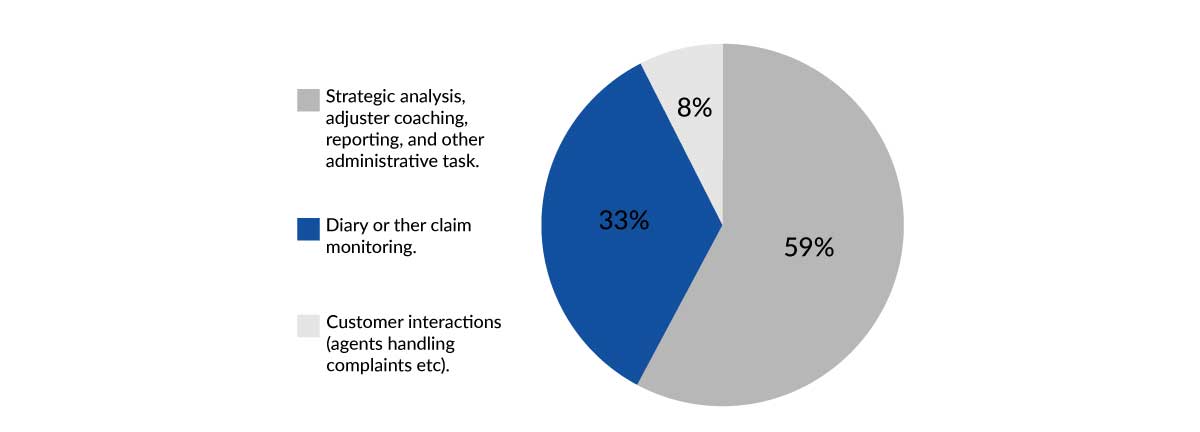
Digital transformation in insurance: Low Code technology
November 7, 2024
Low Code Platforms: Speed to Innovation
December 16, 2024Low Code Development for Claims Management

Responding quickly to claims is one of the most important priorities for insurance companies, as this point makes the difference between a competent service and a poor one. What is at stake is the loyalty of current and potential customers.
Low-code platforms reduce claims resolution times by digitizing processes, automating tasks, and optimizing workflows, providing the company with a cross-cutting view of the business. With a low-coding platform, you get business applications capable of solving most of the challenges your insurance company faces.
According to Forrester Low Code platforms reduce development time by 50% to 90%
Step by step: what to consider when implementing Low Code in claims management
1- Identify key processes to automate
Not all management processes have the same impact on your business, right? That's why it's key to identify those that will benefit the most from automation. You can ask yourself questions like:- Where do bottlenecks arise?
- What repetitive tasks are holding your team back?
- What are the processes that most affect customer satisfaction?
2- Develop quick solutions WITHOUT depending on IT
The main advantage of Low Code is that you don't need to depend on IT to develop a solution, make modifications or optimizations. With this type of technology, you can empower your teams to develop and improve applications without being programmers.Imagine if the people closest to a problem could directly contribute to the solution and, furthermore, implement it themselves. This is where a world of possibilities opens up for making a difference in your industry.
A report by TechRepublic claims that558% of low-code platform users are business professionals, not developers.
3- Evaluate existing systems and integrate them with other applications
It is important that before integrating with low-code platforms you evaluate existing systems to ensure that the new application aligns with the current infrastructure. This includes reviewing the compatibility of APIs, data architecture, business needs and, above all, the customization capacity that the selected platform offers you. This factor directly impacts the growth of your business.Efficiently integrating systems ensures that your technology infrastructure can grow with upcoming trends and needs.
4-Build apps gradually to scale your business
Abrupt change can create more uncertainty than clarity. So you might want to start with a specific problem, such as reducing response times in claims management, and then scale the solution to other areas. By starting with a “pilot test,” you can see the results you get (whether positive or not) and make adjustments before a broader rollout.5- Foster cultural change throughout the organization
Adopting a low-code solution is more than just technology, it also involves a cultural change by seeking to foster a continuous improvement mindset. The goal is to make your teams feel that they have the tools to solve problems in an agile way, as this will increase their motivation and the results will be reflected in customer service.Without Low Code, what could happen?
The team will spend more time on manual tasks, decreasing the ability to successfully respond to claims cases, which could lead to loss of customers and increased bad reputation in the market.According to studies conducted by Aon Corporation, a leader in Risk Management and Human Capital Consulting, insurance company employees spend approximately 33% of their time (2.8 hours a day) on activities related to claims monitoring or management.

In most cases, this follow-up occurs when a complaint anticipates possible negative outcomes, however, advising employees on how to correct the course of the activity can be time-consuming and supervisors are overwhelmed by dealing with complaints that begin to grow.
It's not just about reducing time and costs, but about creating an experience that builds customer loyalty and stands out. Are you ready to take the first step? Do it with the guidance of our experts.
It's not just about reducing time and costs, but about creating an experience that builds customer loyalty and stands out. Are you ready to take the first step? Do it with the guidance of our experts.


